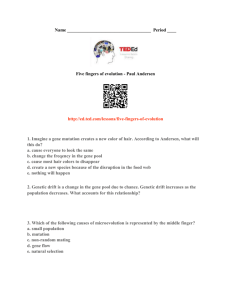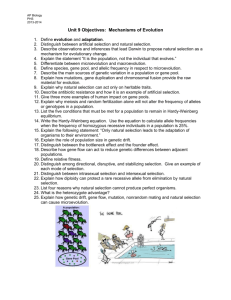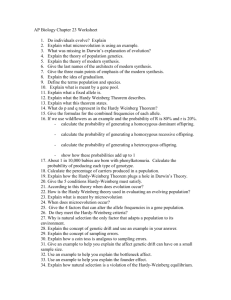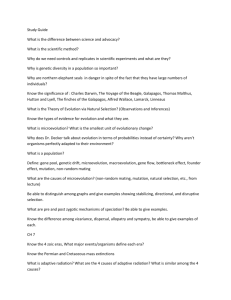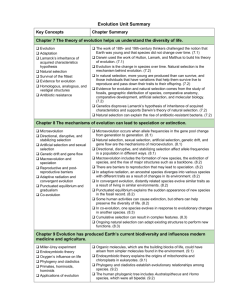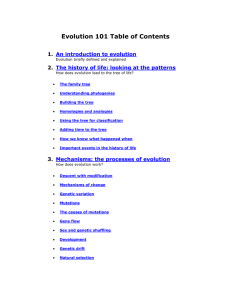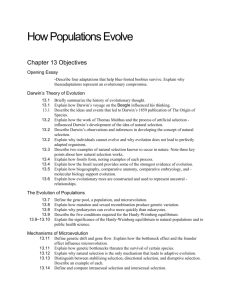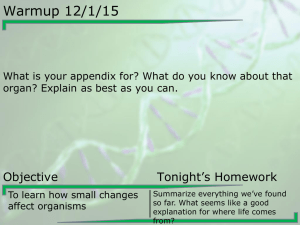Microevolution Outline Evolution
advertisement
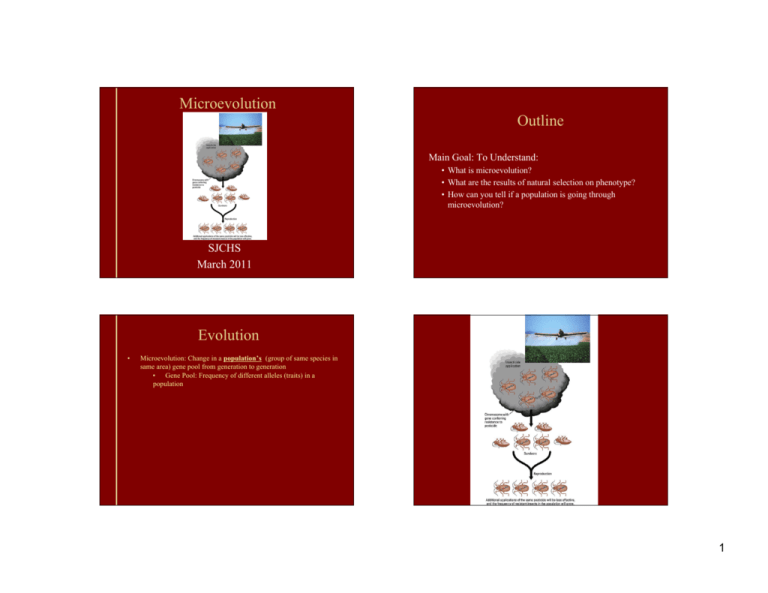
Microevolution Outline Main Goal: To Understand: • What is microevolution? • What are the results of natural selection on phenotype? • How can you tell if a population is going through microevolution? SJCHS March 2011 Evolution • Microevolution: Change in a population’s (group of same species in same area) gene pool from generation to generation • Gene Pool: Frequency of different alleles (traits) in a population 1 Mechanisms of Microevolution • Natural Selection: Individuals whose inherited traits are best suited to local environment are more likely than less “fit” individuals to survive and reproduce Natural Selection • • • • Mechanisms of Microevolution • Mutations: Change in DNA that is the ONLY process that can result in a new trait appearing in organism • Random process • Rare process • Must mutate gametes (sperm or egg cells) in order for the trait to be passed to offspring Outcomes to population phenotype (traits): Directional Selection: Extreme traits Disruptive Selection: Balance between 2 or more traits Stabilizing selection: Traits within a narrow range • Most common Mechanisms of Microevolution • Genetic Drift: Random changes in gene pool of a small population due to chance 2 Mechanisms of Microevolution • Bottleneck event: Disaster causes death of large numbers in population which results to a change in the gene pool Mechanisms of Microevolution • Founder event: Small part of population moves to isolated habitat • Gene pool will be different than larger population Mechanisms of Microevolution • Gene Flow: Gene pool changes as organisms move in and out of population Hardy Weinberg • Hardy Weinberg Theorem: Mathematical model used to determine if a population’s gene pool changing (is microevolution occurring?) 3

